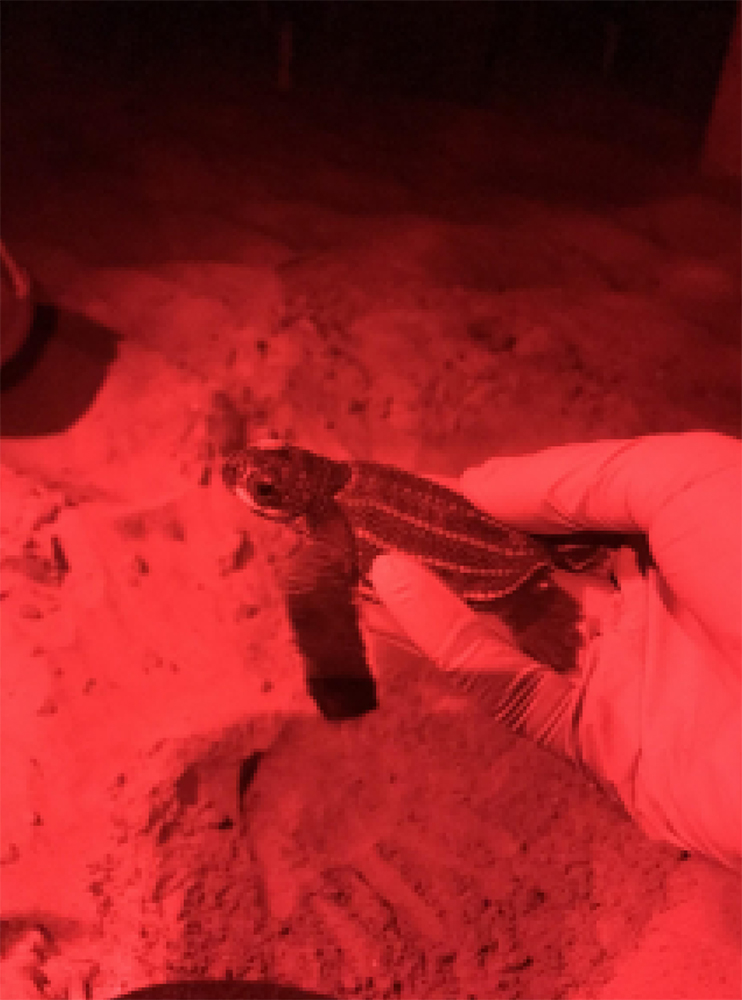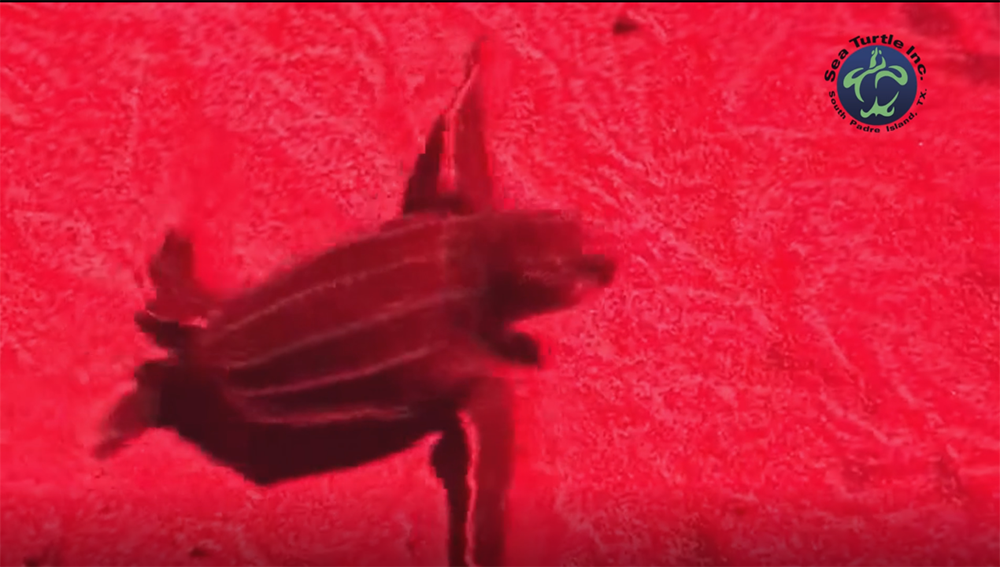Critically endangered leatherback sea turtle hatchlings took their first flippered steps to freedom Friday on South Padre Island.
Rescuers at Sea Turtle Inc. say the successful incubation and release made history of the Island.
“Our team was overjoyed to see hatchlings emerge from their nest and head out into the Gulf last night,” said Amy Bonka, chief conservation officer for Sea Turtle Inc. “This is the first leatherback nest to ever occur on South Padre Island, so we were incredibly surprised and excited.”
Sea Turtle Inc. officials announced the historic mark via social media and a press release Friday. The group also posted a video on to Facebook showing a hatchling crawl across sand in the night.
Although Sea Turtle Inc. did not immediately release the number of hatchlings, the successful incubation and hatching of the leatherback nest appeared a first for Texas, as well.

“This is the first nest in Texas to successfully produce viable hatchlings,” a social media post from Sea Turtle Inc. announced, “and we were overjoyed to see them crawl into the Gulf of Mexico.”
Bonka, whose academic work has primarily focused on the Kemp’s ridley sea turtle, discovered the hatchlings during a routine check of nests at the organization’s monitored corrals, where nests are relocated by rescuers for the nests’ protection. The leatherback nest was found in June and moved to the corral.
According to Sea Turtle Inc., leatherback sea turtles are the largest species of sea turtle in the world, and adults can measure more than six feet in length and weigh more than 1,000 pounds. The species spend the majority of life swimming in open ocean, which is why they have evolved such large front flippers.
“They feed mainly on jellyfish and can eat over 70% of their bodyweight in jellyfish each day,” reads a press release from Sea Turtle Inc. “Leatherbacks get their name because they lack the hard shell that other species of sea turtles have, and instead have interlocking dermal bones, with distinctive long ridges that run the length of their shell from their head to their tail.”
Sea Turtle Inc. said leatherback populations have been in decline for many years.
To contribute to Sea Turtle Inc’s ongoing sea turtle conservation efforts, log on to https://tinyurl.com/jf2d9d45.




